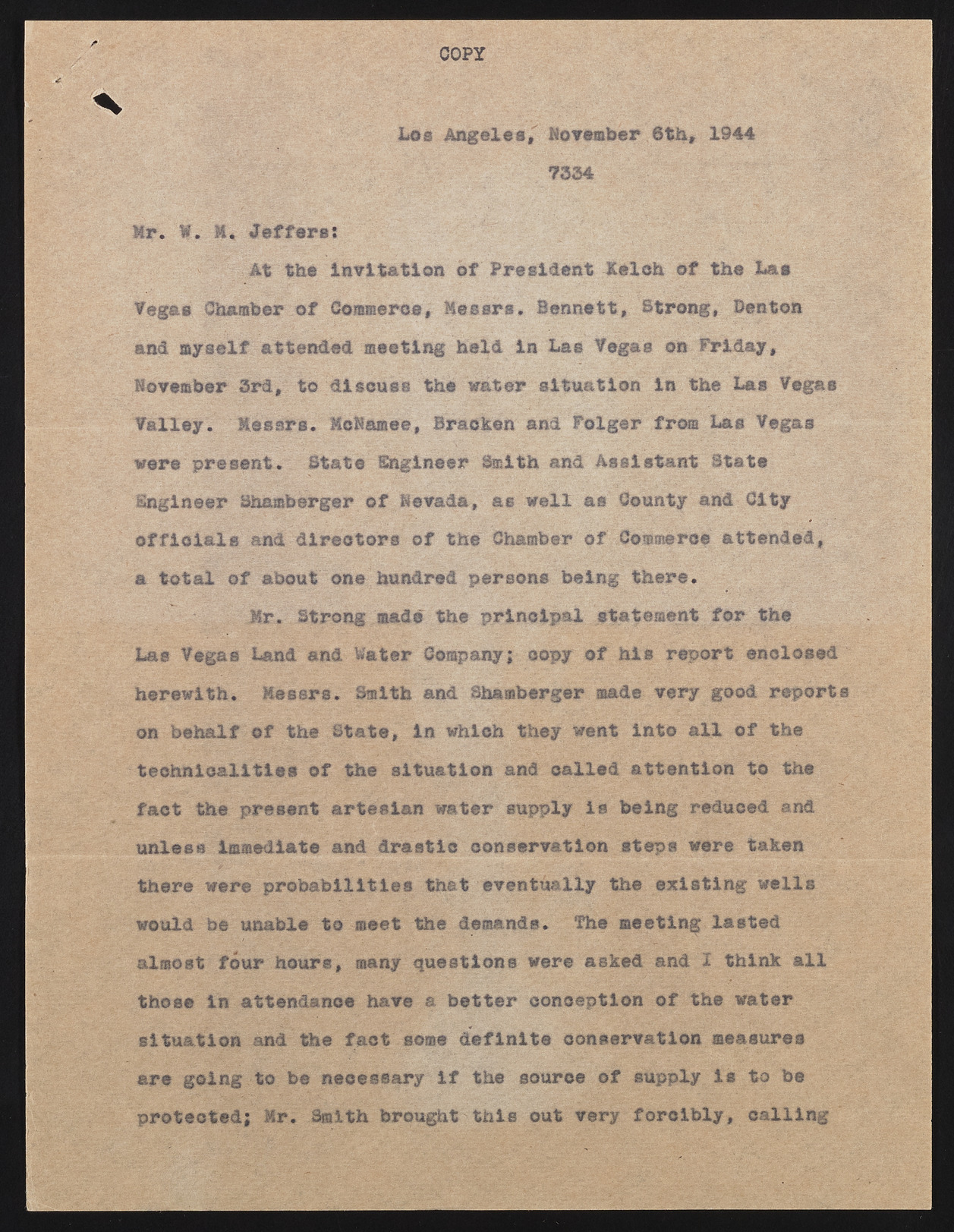Copyright & Fair-use Agreement
UNLV Special Collections provides copies of materials to facilitate private study, scholarship, or research. Material not in the public domain may be used according to fair use of copyrighted materials as defined by copyright law. Please cite us.
Please note that UNLV may not own the copyright to these materials and cannot provide permission to publish or distribute materials when UNLV is not the copyright holder. The user is solely responsible for determining the copyright status of materials and obtaining permission to use material from the copyright holder and for determining whether any permissions relating to any other rights are necessary for the intended use, and for obtaining all required permissions beyond that allowed by fair use.
Read more about our reproduction and use policy.
I agree.Information
Digital ID
Permalink
Details
More Info
Rights
Digital Provenance
Publisher
Transcription
COPY Los Angeles, November 6th, 1944 7334 Mr. V. M, Jeffers: At the Invitation of President Kelch of the Lae Vegas Chamber of Commerce, Messrs. Bennett, Strong, Denton and myself attended meeting held in Las Vegas on Friday, November 3rd, to discuss the water situation in the Las Vegas Valley. Messrs. McNamee, Bracken and Folger from Las Vegas were present. State Engineer Smith and Assistant State Engineer chamberger of Nevada, as well as County and City offloi&ls and directors of the Chamber of Commerce attended, a total of about one hundred persons being there. Mr. Strong made the principal statement for the Las Vegas Land and Water Company| oopy of his report enclosed herewith. Messrs. Smith and Shaaberger made very good reports on behalf of the State, in which they went into all of the technicalities of the situation and called attention to the fact the present artesian water supply is being reduced and unless immediate and drastic conservation steps were taken there were probabilities that eventually the existing wells would be unable to meet the demands. The meeting* lasted almost four hours, many questions were asked and I think all those In attendance have a better conception of the water situation and the fact some definite conservation measures are going to be necessary if the source of supply is to be protected; Mr. Smith brought this out very forcibly, calling

